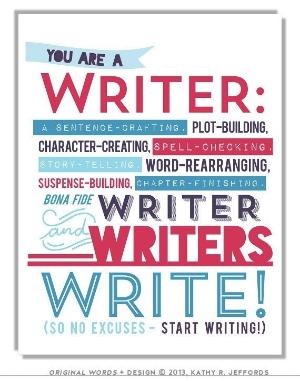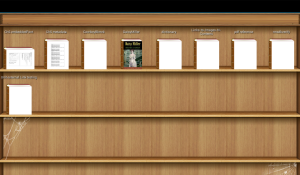Source: Want to Know More About You
Daily Writing
AUTHORS Announces YA Fiction Competition – Digital Book World
http://news.google.com Wed, 02 Dec 2015 17:31:02 GMT
AUTHORS Announces YA Fiction Competition Digital Book World AUSTIN, TEXAS November 23, 2015 – AUTHORS, Inc., creator of AUTHORS.me, the premier online platform for queries, manuscript submissions and acquisitions discovery empowering writers, agents, and publishers, announced its Young Adult Fiction …
Authors Believe Apple’s Entry Into E-Book Market Wasn’t Anti-Competitive – Mac Rumors
http://news.google.com Thu, 03 Dec 2015 13:39:11 GMT
Cult of MacAuthors Believe Apple’s Entry Into E-Book Market Wasn’t Anti-CompetitiveMac Rumorsibooks-icon A coalition of authors and well-known booksellers have come forth to back Apple in a petition to overturn a recent ruling that stated the company was liable in conspiring to fix the prices of electronic books when its iBooks store launched …Authors ask Supreme Court to overturn e-book ruling against AppleCult of MacAuthors and booksellers back Apple in ebook appeal to Supreme Court, say …9 to 5 Mac (press release)Authors and booksellers call for overturn of Apple rulingThe Booksellerall 4 news articlesᅠ»
Authors Directories and Databases
American Authors on the Web
A huge list of articles featuring American authors from Ernest Hemingway to Thomas Paine.
Author’s Guild
The Author’s Guild is the nation’s largest society of published authors and is a leading advocate for fair compensation, free speech, and copyright protection.
Authors & Illustrators on the Web
The Internet has become a great source of information about a great many children’s writers and illustrators. The websites listed here include authors’ personal websites and websites maintained by fans, scholars, and readers.
Ghost Writing
The Writers For Hire offers ghost-writing, research, editing and rewriting. They work with all sorts of subject matter, including business, computer, marketing, novels and art.
Native American Authors
This website provides information on Native North American authors with bibliographies of their published works, biographical information, and links to online resources including interviews, online texts and tribal websites.
Nordic Authors
Project Runeberg’s continuously updated database of more than 12,000 authors and other relevant people from the Nordic countries, including hundreds of detailed biographies.
Novelists, Inc.
Novelists, Inc. keeps its members connected, communicating, and well-informed while striving to better the status of fiction writers.
Peter’s Place of Freelance Journalism
Peter’s Place is devoted exclusively to the business of freelance journalism, with a touch of humor. This is a primarily a professional site with some information for new journalists. Peter’s Place is updated regularly and welcomes your comments and suggestions.
Intoxcy8me’s Blog
Intoxcy8me is an accomplished author and a master in light-hearted ghost stories. He also acts on behalf of authors as a literary agent. Better known for his science-fiction books in the Shadow Master series. His primarily website consists of “how-to” articles on writing novels. Each week, the author takes one aspect and offers tips and suggestions. In addition, once every now and then, he interviews a published novelist to find out his or her secrets for success.
Timeless Hemingway
A favorite maxim of Ernest Hemingway was “il faut d’abord durer” roughly translating to “first, one must endure.” Come see why this writer has endured.
Write4Kids
All about writing books and stories for children: advice, how-to info, tips, messaging, research links and much more.
Write Better, Get Published
Inside this site you’ll be shown how to write, how you can successfully market what you write to magazines and book publishers, and how you can choose the publishing option that’s best for you.
Novelist World
Novelists World keeps its members connected, communicating, and well-informed while striving to better the status of all types of writers.
If you would like to be added to this list just drop me a comment and I will be happy to include your website.
Review Writing
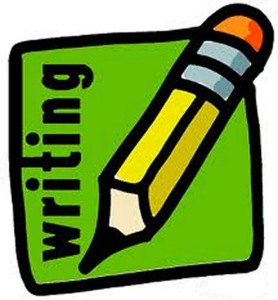 Reviews can make or break a business’ future. We know how important they are, and we are here to rise up to the challenge.
Reviews can make or break a business’ future. We know how important they are, and we are here to rise up to the challenge.
For the Product/Service Owner
It is hard to determine if a reviewer is truly objective about his or her appraisal, but it is not sound business practice to leave things up to chance. We know how to present the truth while writing in an attractive and upbeat tone, and the best part is we can do so in a very natural and unpretentious way.
A reader expects the reviews to be truthful and objective, and we can do so with ease and proficiency. We can write reviews in a way that focuses your product or service’s strengths without exaggerating in typical marketing fashion. We can even present your product or service’s weaknesses in such a way that they become constructive for your business, without covering them…
View original post 299 more words
Must Haves For Your Author Website
10 Author Website Must Have Elements
New authors have a lot to do: build a platform, develop a web presence, network, research options, figure out the business, and of course, write their book.
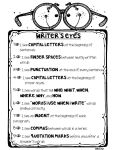 An author website has a lofty goal: it needs to not just be, but also needs to perform and respond.
An author website has a lofty goal: it needs to not just be, but also needs to perform and respond.
No longer just a fancy, static, online business card, it is an author’s ‘homebase‘, a marketing and networking hub and a portal that allows communication to flow between an author and his or her readers.
An essential must have for new authors is a strong, easily navigable website. But if you find yourself asking, “What on earth am I supposed to put on my website when my book isn’t even finished yet?” let us help.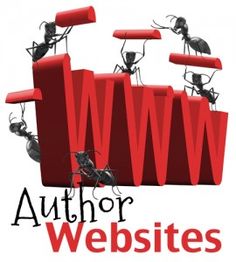
Visiting an author’s website is one of the leading ways that book readers support and get to know their favourite authors better. The stronger the relationship, the more likely zealous advocates will spread the word about the author to friends, family and peers.
And website visits can translate directly into books sold.
Therefore, even if you are on social media or actively promoting your work offline, operating without a website is just silly. Why invest the time and energy in writing your book, getting it published and developing other marketing strategies only to be absent online? In today’s market, it is a huge drawback and a valuable promotional opportunity missed if your readers can’t easily locate you with a few quick key strokes.
The rub?
Learning how to design a website and incorporating the ‘must have elements’ requires some skills.
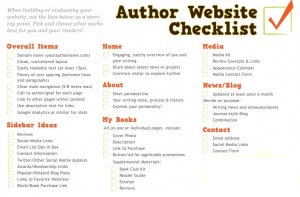 In the past, it was a higher hill than most authors were willing to climb. Even if an author perceived the need for a website but lacked the skills to create one, he or she would often end up paying big money to a professional website designer for a site that was rarely updated and poorly optimized for its intended purpose: to connect with readers and sell more books.
In the past, it was a higher hill than most authors were willing to climb. Even if an author perceived the need for a website but lacked the skills to create one, he or she would often end up paying big money to a professional website designer for a site that was rarely updated and poorly optimized for its intended purpose: to connect with readers and sell more books.
Thankfully, technology has simplified the process. Now, all authors who recognize the benefits of an online hub or homebase, can have one.
1. Designing Your Author Website: Ensure a Good First Impression
Your author website is an essential piece to the successful book marketing puzzle, but as always, first impressions matter. It is tempting to just get something up quickly, that requires little cost, and get back to the joyful torture of writing your novel.
However, while it’s certainly possible to set up your website quickly and with relatively little expense, it is extremely important to remember that your website represents who you are and what you have to offer.
A website will help to increase not only your book’s visibility across the internet, but yours as well. In many cases, it may be your future fans first impression of you–especially if you have not yet published. Make sure that your site reinforces the image you wish to portray. (For more on discovering your author brand, go here.)
With your author brand in mind, ask yourself the following questions about your current or new author website:
 Will people know what I write within seconds?
Will people know what I write within seconds?
Does the voice, tone, attitude and mood of the site resonate with my ideal reader?
Will they understand the page they are on and what it’s about?
Will they know what to do next?
Does the site appear credible?
Is it clear why they should buy my book or subscribe to free updates?
What does the site provide the reader?
Just like it’s important to have fresh eyes editing your novel, ask others for their answers to the above questions and get their opinions on the first impressions your site gives rise to. You might be surprised at their answers!
As you design your site, keep both aesthetics and functionality in mind. You don’t need to run out and hire a $12,000 designer to have a professional looking site, but do keep the following in mind:
Your site should look clean and uncluttered. Less is more, especially in your sidebar. And white space is your friend 🙂
Your site is polished, legible (go for clear, not clever) and spell checked. Choose larger font sizes and colors that are easy to read. Light fonts on dark backgrounds or minimal contrast between font color and backgrounds are difficult to read.
Keep navigation easy and clear, so your readers can find the important stuff.
Use color to draw attention to select elements. For example, pick one color to be your “action” color. Whenever you want a reader to take action by clicking a link or subscribing, ensure you use that color only for the link or button, and no where else. (Can you guess what my action color is on this site?)
Avoid a chaotic mix of colors. Instead pick two to four colors for your design template and don’t try to make everything stand out–then nothing will.
Avoid anything unnecessary like Flash (Apple currently doesn’t support Flash), animated backgrounds or music. If your site takes a long time to load, or doesn’t work on a mobile device (iPad), you will lose a large number of visitors to your site.
Keep elements consistent from page to page.
Is your site branded for longevity? Is it book/genre specific or limiting, given your future writing plans? You do not want to rebrand or redesign the next time you publish.
Remember, your site has to be compatible with different browsers and devices, so check how things look on multiple browsers, tablets and phones.
Create content that is useful, engaging and well organized. Your posts and copy must be easy to scan. (Ugh, I know! As a fellow writer who bleeds over every word, I feel your pain!) People read differently online, so use bulleted lists, section headers and short paragraphs to convey your message, and learn the importance of writing a magnetic headline.
2. About/Bio Page
About pages are among the most frequently visited pages on the internet. Your readers want to know more about you, and this is the place to tell them.
Even as a visitor is delving into what you’re all about, what they are really thinking is WIIFM? (What’s in it for me?) Keep this in mind as you incorporate some of these ideas into your about page:
Consider having a professional headshot and short blurb from your homepage with a link to your About page for more information.
Break your About page into sections.
1. Start with a persuasive headline, that lets your visitor know what they can expect. (For an example, check out some About pages on several different websites.)
2. Reassure your readers that they are in the right place and tell them what your site will give them.
3. Strengthen your credibility with some testimonials, reader quotes or other forms of social proof (more on this below).
4. Tell your personal story. Frame your content around what led you to writing, why you write the kind of books you do, what you love about it. Make sure your personality shines through! You can also include your writing credentials and professional associations.
5. If a visitor gets to this point in your about page, you’ve got them interested. Ask them to join your email list, and provide a link to your books, services or other products.
Here are more ideas:
What do you want to know about your favourite author? Include that.
Keep your About page and Bio up to date.
Link to your Media Kit/Press page if you have one.
Be personal, but be careful not to over share; stay professional.
3. Contact Information
It’s surprising how difficult authors will make it for their readers (media, agents, publishers…) to contact them. There might be a tiny email address buried at the bottom of their website or noted on some obscure page deep within their blog. DO NOT make your visitors hunt for your contact information!
“If your goal is to engage with your readers online, don’t play hard to get.” (click to Tweet)
Make it as easy as possible for someone to get a hold of you. Here’s what to do:
Have a contact tab in your top main menu that leads to a page with your preferred ways to be contacted. Don’t list every possible way you can be found, just the best ways. If you use a contact form, make sure it’s simple and you’re only asking for the info you require to get back to that person. If you note your email address, use yourname[dot]com to avoid spam harvesters.
You can also encourage your readers to get in touch with you via the social platform(s) you are most active on.
Provide multiple ways for people to contact, follow and Like you. It’s not your readers job to find you. It’s your job to be where your readers are.
4. Email Sign Up/Updates
It is never too early to start collecting email subscribers. Early sign ups are the most likely to be your biggest fans and most ardent supporters. These are the people that will forward your new releases and insider updates to their friends, evangelize you on Twitter, attend your events or push up your sales rank on Amazon when they hurry to get your new book.
I highly recommend using Aweber to manage your email list. Using a high quality, industry leader for your email list management is important to ensure your emails get to your fans and not their spam boxes. It’s easy to use, with tons of step by step videos, and very helpful customer service if you get stuck. And putting your form on your site is as easy as copying and pasting.
For more on building your email list, go here.
A few additional tips:
Don’t panic! You do not have to produce a newsletter every week. Some people make a point of letting you know up front that “nothing much happens… an email about once a month will cover it…” Just keep in mind that you should not be ‘selling’ something every time (and the only time) you contact your subscribers.
Just an email address, or first name and email address is enough info. You don’t want to scare people off by asking for more.
Your email optin box should be bigger and bolder than other elements on the page, but don’t overdo it.
Make all links and buttons your ‘action’ color (as above). And make sure your links and buttons look clickable.
Consider including a signup incentive, like a promo code for your latest book, a bonus chapter, a sneak preview of your next book, or a free chapter from a different character’s POV.
5. Testimonials
Social proof, testimonials and positive quotes from fans and reviewers can go a long way in increasing your credibility and authority with visitors to your author website.
Place real, short and powerful testimonials on your site. Include positive reviews, quotes from fan mail, notable media coverage, and if you have a significant following on Twitter, Facebook, Goodreads, Wattpad and so on, note it.
Great locations for your fan testimonials are your About page, Homepage and on your sidebar, just under your email sign up form.
6. Social Media
There are two areas to focus on when it comes to social media and your site. The first, is to provide visitors the ability to find and follow you on your various social media platforms.
To encourage follows and Likes, add links to your social media profiles (Twitter, Facebook) on your Homepage, About page, and Contact page. Then ask people to follow or Like you. It’s just crazy enough to work. Let’s try it 🙂
Like Your Writer Platform on Facebook
Follow Your Writer Platform on Twitter
The second area to focus on regarding social media, is making it super easy for people to share your site and your content with others. To do this:
Write amazing content
Add a sharing plugin to every page on your site, so visitors can share your pages via all the major social networks.
The free plugin I use on YWP is called SumoMe, but there are many to choose from.
7. Books, Products and Services
Depending on what you have to offer, you may have separate pages for your books, products and services, or combine everything in one. For books, include a large cover shot, an enticing blurb and clear details on purchase options (with links).
You may want to feature your current project on your Homepage. Provide a link to your Book page for visitors to get additional information about the book, get some behind-the-scenes info or promotional materials. (A Press/Media Kit for each book would be ideal).
Tip: If your books are available on Amazon, join Amazon Associates and you will be provided a code to link your book. You will also get a percentage of whatever a buyer purchases after they click your link–even if it’s not your book (lets hope it’s a T.V.). Once you have signed up for an account, type in your book title. When your title pops up, click “get link”, and Amazon will give you a variety of options to customize your link. Just copy and paste that code where you want it on your site (sidebar, Book page), and your book will show up with a buy link.
8. A Blog
Websites with blogs get 55% more traffic than websites with no blog. As well, having a blog creates fresh, additional pages of content which is great for SEO (Search Engine Optimization).
If your goals are to be seen by more people, drive potential book buyers back to your site, and establish yourself as an industry authority and thought leader, you need to include a blog on your site.
Here are a few more additional benefits:
You can entice your current and future fans with exclusive, unpublished content, inside information and downloadable extras, like sample chapters.
Readers find it especially appealing to find out who their favourite author reads or recommends. This is often a missed opportunity to not only engage with your readers, but network with and support your peers. No matter how famous, everyone loves recognition and appreciation, so share the love! This is also a great way to get inbound links–other sites linking back to your site. This too, increases your importance in the eyes of Google.
Utilize your blog’s comment section to converse and engage with your audience. You can even encourage interaction between your readers by encouraging them to comment or reply to each others comments.
You can have excerpts of your most recent blog posts on your Homepage, which will dynamically update each time you publish. This keeps the content on your Homepage fresh, and encourages people to return for more.
A blog gives you the freedom to add additional content and bonuses (see below) without cluttering up your Homepage.
9. Appearances/Speaking Engagements/Latest News/Events
Include a section or page on your site that allows you to inform your fans of your whereabouts and upcoming events. Include things like:
Latest News/Events: interviews, blog mentions, reviews and other media coverage items you can share with your audience.
Appearances: book readings and signings, speaking engagements, interviews, conferences and professional events, workshops and so on, so your fans can find out the details and attend.
10. Press Page/Media Kit
The purpose of a press page or media kit is to easily provide the media, or anyone wishing to profile you, with the info they need to feature you in their piece.
The contents of a press kit will vary, but here are some of the basics of what you should include:
Basic author bio, including contact info.
Author photo (use a professional-looking headshot), and any additional photos that can be used when writing about the book.
Information about the book, including a sample review, sample chapters.
Press release.
Testimonials.
The simplest way to make your media kit available is to turn the contents into a PDF. Provide a brief description and a link on a page on your site. Make it easy to find, and consider carrying around a few hardcopies at conferences/events, in case you receive a request for a copy.
Bonuses/Extras
Get the creative juices flowing! There are many fantastic ways to build value into your website for your readers and to keep them coming back for more.
You can include a slideshow of photographs, sketches, illustrations of characters and locations in your book, and other meaningful images.
Add other multimedia like audio files, a podcast, YouTube video and video trailers.
Additional research material.
If you are an expert in your field, and your book is an extension of your career, include things that spring from the larger context of your work and experience.
Younger fans are often interested in contests, games and prizes (autographed books).
An author’s favourite book, music, and movie recommendations are also fan favourites, so include these and some of your other influences.
Include sneak peeks, additional content that isn’t in your books, main character bios, extra chapters, alternate character POV’s and any other bits that didn’t make the cut. Your readers will love it!
This is a lot of information, but don’t let it overwhelm you. You are building your writing platform and career, one plank at a time, so there must be some effort involved.
Bookmark this page and come back to it over and over again if you have to. The thing to remember is that if you put the time in at the beginning, you will reap the benefits ten fold over the course of your career.
But, know when to stop tweaking. You should be spending five to ten times as much time on creating content as fiddling, changing and rearranging your website.
To keep on track, have a clear goal for your author website (sell books, build a platform, connect with readers), keep your author brand in mind while you design, and create great value for your readers so they can’t help but come back for more.
An essential must have for new authors is a strong, easily navigable website. But if you find yourself asking, “What on earth am I supposed to put on my website when my book isn’t even finished yet?” let us help.
Here are the absolute top 5 must haves for every author website:
- Catchy, engaging information. Use a catchy headline to attract readers’ attention and give an engaging book summary to pull them in! If you have any graphics or a clear image of the cover of the book, this would be a great place to put it!
- Contact Information/About the Author. Give your readers a place where they can contact you. Many will have questions where they can find your new book when it’s ready. This is also a great place to link them to your newsletter!
- Testimonials. Even if your book isn’t finished yet, any testimonials of people who have read parts of your book (family members, friends, book reviewers, bloggers) should go on your website. People are pulled in if other people like it.
- Social Media Connections. Make it easy for your readers to follow your social media. The more they are connected, the bigger your outreach!
- Calls to Action. Let readers know where, when, and how to buy your book, and make it as easy for them as you can!
So there you have it! Some of your author website ‘must have’ elements.So what about you? Any elements I’ve missed that work well on your author site? Please share in the comments below.
How to Create eBooks Using PDF
The concept of the e-reader dates back to Bob Brown’s 1930 book titled The Readies, however, digitized books didn’t become a reality until the 1971 launch of Project Gutenberg, which introduced the first e-book, a digitized copy of the Declaration of Independence.
Since then, e-books have managed to capture a nice-sized share of the publishing market, and the e-book has become quite popular with businesses. Used for product manuals and instruction manuals, e-books help cut costs associated with printing physical books. Marketing departments have also discovered that e-books are a great form of content marketing, using the e-book format to deliver:
- Case studies
- White papers
- Reports
- Anthologies
These marketing tools enable companies to collect leads, create shareable content and strengthen their search engine optimization efforts.
So if you want to create an e-book, where do you begin? Let’s take a look.
Using PDF software to create an e-book!A great e-book starts with an idea, a story to tell. You also need the right tool to translate that idea to a consumable product. Some people opt for standard word processing software but that has a number of limitations.
Others may opt for software proprietary to a specific e-reader but that limits the audience.
The best choice is to use your PDF software so that you can create a rich, well-formatted document that anyone can read. Here’s how you do just that:
- Choose your topic. Businesses get the most traction out of e-books that help their customers solve a problem.
- A list of best practices, a collection of statistics or even examples of how to overcome common issues all make for great e-book content.
- Outline your content.
- This is an important step because it helps you get your thoughts organized and plan for what the layout of your book is going to look like.
- Write the text.
Using your outline as a guide, open your PDF software and begin writing. Concentrate on the content instead of worrying about images or graphics. You can always make a note using the comment tool in your application to designate the location of these elements if they occur to you as you’re writing.
Edit. PDF software includes a full set of tools that allow for peer editing and collaboration. Since this document represents your business, make sure that others have a chance to look over everything to ensure there are no mistakes and that what you’re saying is consistent with your company’s message.
Choose fonts and colors. Now that your content is set, it’s time to start working with the aesthetics. Select fonts that are easy for people to read both in print and on smaller smartphone screens. When in doubt, serif faces are always a good idea. Also, make sure that any colors you choose for your fonts provide enough contrast to make reading easy.
Add graphics.
Now it’s time to start supplementing your written content with images, graphs, tables and any other visual elements you may want to include. Since you’re using PDF software, you can even embed video and audio into your e-book for a richer multimedia experience. Using the tools included with your software, you have the ability to resize, crop and edit images to work within your document.
Adjust the layout. PDF software resembles desktop publishing software in the way it allows you to resize text areas, move elements on the page and manipulate the layout of your document. After adding graphics and changing the font, you’ll need to arrange everything in your document so that the content flows nicely for the reader.
Create a title page.
Your title page can be as simple as the name of the document or you can use visual elements to really make it stand out. Just make sure that you include any necessary information related to your business on the title page.
Make it accessible. In some industries, it’s a requirement that all documents are 508 compliant.
Review it.
Send a draft to colleagues to review before making it final.
Using Shared Review is a great mechanism to have a collaborative review.
Once you’ve completed your e-book, however, the work’s not quite done. While your PDF editor software will certainly help you put together a great looking document, getting it in front of its intended audience is entirely up to you.
That we’ll cover in a new article for you later.
Example
EXAMPLE Post Tips
What is a paragraph about?

Ask: I have multiple paragraph on the same page. What is a paragraph rule?
Answer: The Basic Rule: Keep one idea to one paragraph! Paragraph length. Long paragraphs wear a reader down.
Avoid writing more than five or six sentences in a paragraph before you break.
New Topic
This one’s mainly for essays. Every time you go on to a new topic, you should make a new paragraph.
New paragraphs are important for the reader.
They tell when you’re switching time, place, topic or speaker, and they help break the page up so it is not just a solid block of writing.
Seeing that can be discouraging, and you don’t want your reader to be discouraged before she even starts to read. Learning how to break your stories and essays into paragraphs is a confusing but important job. Nobody ever really sits down to tell you the basic rules about when to make a new paragraph, so you generally have to muddle along, making the rules up for yourself.
This is too bad.
You can break a piece of writing into paragraphs after you’ve written it, or you can do it as you go.
Doing it as you go is the best choice, but you might not be able to do that right off the bat.
How to do it
There are a few standard times to make a new paragraph:
- When you start in on a new topic
- When you skip to a new time
- When you skip to a new place
- When a new person begins to speak
- When you want to produce a dramatic effect

